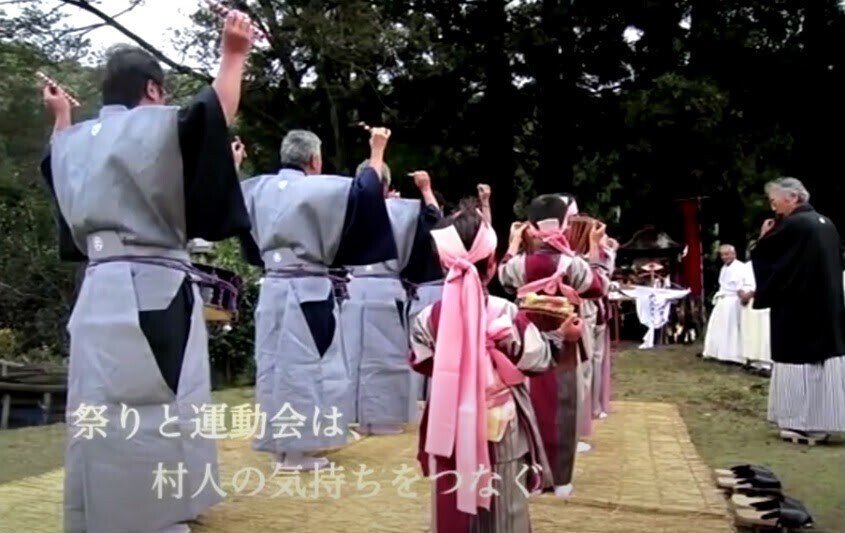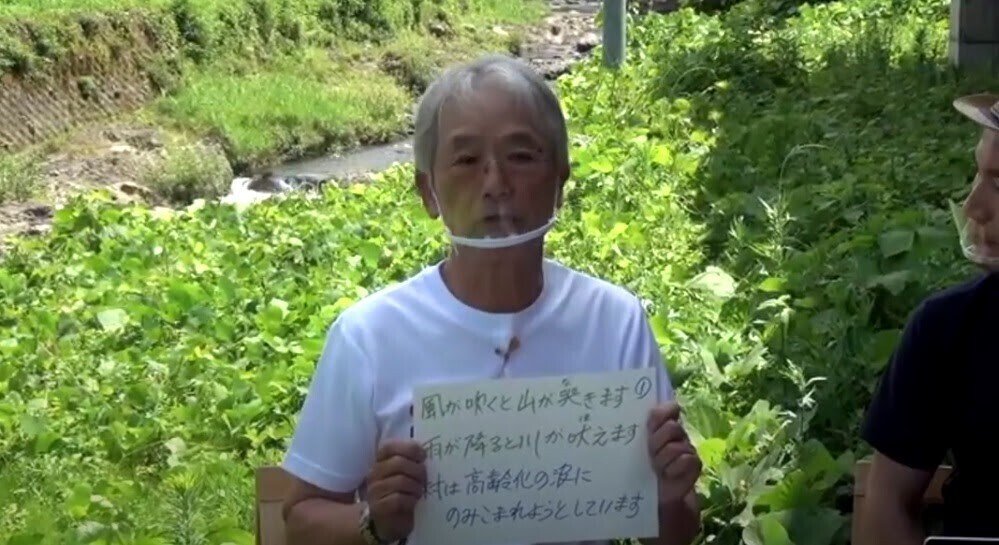
自然と共生する炭焼きと野間地域の暮らしの智慧 Charcoal-burning that coexists with the nature and wisdom of living in the Noma area
2021年7月31日、「丹後の智慧と紡ぎ手に出会うオンラインツアーVol.2 ~自然と共生する炭焼きと野間地域の暮らしの智慧~」が開催されました。
On July 31, 2021, "Online Tour Vol.2-Meeting Tango's Wisdom and Spinners-Charcoal Burning in Coexistence with Nature and Wisdom of Living in the Noma Area-" was held.
【丹後の智慧と紡ぎ手に出会うオンラインツアーとは】
京都府北部に位置する丹後半島では、人々は昔から豊かな大自然と調和しながら、暮らし、働き、ものづくりをしてきました。
そこには永い年月を経て、紡がれてきた地域や暮らしの智慧が至るところに存在します。
そんな地域や暮らしの智慧を紡ぎ続ける魅力的な人々を紹介し、交流するオンラインイベントです。
An online tour where you can meet the wisdom of Tango and the spinner is the online event that introduces and interacts with attractive people who live, work, and make things while harmonizing with the abundant nature on the Tango Peninsula located in the northern part of Kyoto Prefecture.
With the theme of the wisdom of the region and lifestyle that has been spun over the years, totally 6 types of tours are scheduled to be held this year.
第2回目の講師は、京都府京丹後市弥栄町野間地区で、自然と共生する炭焼きや地域活動に取り組まれている「よりやぁ窯」 代表の藤原利昭さん。
The second local wisdom mister is Mr. Toshiaki Fujiwara, the representative of "Yoryâ Kiln", who is engaged in charcoal burning and local activities that coexist with nature in the Noma district of Yasaka-cho, Kyotango City, Kyoto Prefecture.
京丹後市内でも山に囲まれた自然豊かな野間地域。この地で昔から営まれてきた伝統的な炭焼きや自然と人との共生について、また、この集落で暮らす魅力や地域の智慧について語っていただきました。
The Noma area is a region with rich in nature surrounded by mountains even in Kyotango city.
He talked about the traditional charcoal-burning that has been practiced in this area for a long time, the coexistence of nature and people, the charm of living in this village, and the wisdom of the region.
-------------------------------------
【講師 Local wisdom mister】

藤原 利昭(Toshiaki Fujiwara)
よりやぁ窯 代表 The representative of Yoryâ Kiln
京丹後市弥栄町在住。
2009年に中学校教員を退職後、炭焼き名人を師としてよりやぁ窯を建造し、炭焼きを通して環境問題にも取り組んでいる。
これまで野間連合区区長を歴任し、暮らして良かった、暮らし続けられる地域づくりに奔走してきた。野間の自然と暮らしの魅力を発信する「野間カレンダー」を発行し、景観保全を目指した「炭を焼いて紅葉を植えるプロジェクト」も進行中。
また、仲間とともに、エコ・ミュージアムである丹後半島の奥深さを伝える「丹後縦貫林道ものがたり」の作成にも取り組んでいる。
Lives in Yasaka-cho, Kyotango City.
After retiring from a junior high school teacher in 2009, he built a kiln with a charcoal-burning master as his master and is also working on environmental issues through charcoal-burning.
He has served as a ward mayor of Noma Union ward and has been striving to create a community where everyone can continue to live happily.
He has published "Noma Calendar" that conveys the charm of Noma area's nature and living, and "Project to burn charcoal and plant autumn leaves" is underway to preserve the landscape.
He had been working with his colleagues on the creation of the "Tango traverse forest road story," which conveys the depth of the Tango Peninsula as an eco-museum.
【モデレーター Moderator】

長瀬 啓二 (Keiji Nagase)
一般社団法人Tangonian 代表理事
Representative Director of Tangonian General Incorporated Association
京都府京丹後市出身。
京都外国語大学在学中、オーストラリアへ留学。
地元である京丹後市に2010年よりUターンし、中学校英語教員、福祉団体、鉄道会社職員、豊岡DMO勤務を経て、一般社団法人Tangonianを設立。
「暮らしと旅の交差点」をコンセプトにコミュニティツーリズム活動に携わっている。
Born in Kyotango City, Kyoto Prefecture.
While studying at Kyoto University of Foreign Studies, studied abroad in Australia.
Back to the local city of Kyotango from 2010 and after working as a junior high school English teacher, a welfare organization, a railway company employee, and Toyooka DMO, he established Tangonian.
Engaged in community tourism activities with the concept of "the intersection of Living and Traveling".
野間地域で起こっている自然環境の変化
Changes in the natural environment occurring in the Noma area
今回は、京丹後市弥栄町野間地域の美しい緑の風景の中でオンラインツアーが行われました。
This time, the online tour was held in the beautiful green scenery of the Noma area in Yasaka-cho, Kyotango city.

まず始めに、野間地域での暮らしについて「自然編」と「文化編」の2本立てで動画にて紹介がありました。
First of all, there was a video introduction about living in the Noma area in two parts, "Nature" and "Culture".

野間は山に囲まれた自然豊かな場所で、今も美しい源流の風景があります。豊かな水は稲を生み、澄んだ空気をもたらします。夜空の天の川、冬の雪景色もまた美しい地域です。
The Noma area is a place surrounded by mountains and rich in nature. You can still see the beautiful headwater landscape there. Rich water produces rice and brings clear air. The Milky Way in the night sky and the snowy landscape in winter are also beautiful in this area.

清涼祭や運動会、文化祭など、地域の行事も活発に行われています。
Local events such as refreshing festivals, athletic meets, and cultural festivals are also actively held.
こうした豊かな自然、文化、暮らしがある一方で、講師の藤原さんは危惧していることがあると言います。
While there is such rich nature, culture, and life, Mr. Fujiwara, the local wisdom mister, said he has the things he worries about.

藤原「恵みである自然が悲鳴をあげていると感じます。人間が手を入れすぎている部分もあるし、人間が手を入れないがために悪化していることもあると思います。遠くから見る山は緑に見えるけれど、近づくと山肌が見えて茶色く見えることがあります。これは鹿が幼木まで食べてしまうせいなのですが…。山に入ってみると全然新しい木が育っていないということがあるんです。」
Mr. Fujiwara: I feel that the nature that gives us grace is screaming in pain.
I think there are parts where humans are modifying too much, and there are also parts where it is getting worse because humans are not taking care of nature at all. Mountains are seen from a distance look green, but sometimes when approaching, the mountain surface may appear brown. This is because the deer eats up the young tree. When you enter the mountain, you might realize that no new trees are growing.
また、藤原さんが小さい頃は水量が多く豊かだった野間川も、今は土砂の流入があり、岩が埋もれて、川そのものが死滅するのでは、というところまできていると言います。
自然と共に暮らす中で、様々な自然環境の変化を藤原さんは感じておられるようでした。
In addition, the Noma River was abundant with a large amount of water when Mr. Fujiwara was a child, but now it has reached the point where the river itself may die due to the inflow of sediment and the rocks being buried.
While living with nature, Mr. Fujiwara seemed to feel various changes in the natural environment.
炭焼きを始めたきっかけ
The reason why he start charcoal burning
「自然との共生」は昨今よく耳にするテーマですが、野間地域では古くから、炭焼きを行うことで山と上手くに関わってきた歴史があります。昭和30年頃は、なんと120基もの炭窯が起動していたのだとか。
"Coexistence with nature" is a theme that we often hear about these days, but the Noma area has a long history of being well involved with mountains by charcoal-burning. Surprisingly around 1955, 120 charcoal kilns were in operation.

藤原「炭焼きは山に入り、炭に適した木を切って焼きます。木がなくなれば、次の木がある場所へ移動します。炭に適した広葉樹の特徴でもあるのですが、90センチくらいのところで切れば、必ずまた再生するんです。ケヤキでもカシでもそうですが、切った木は10年から15年くらいで炭焼きに最も適した大きさになります。そうやって、ぐるぐると山を回りながら、山の再生を促してきたんです。」
Mr. Fujiwara: For charcoal-burning, charcoal burners go into the mountains, cut and burn wood appropriate for charcoal. When the tree is gone, they will move to the place where the next tree is. It is a characteristic of hardwoods that are suitable for charcoal that if they cut it at about 90 cm, it will surely regenerate again. As with zelkova and oak, the cut wood will grow the most suitable size for charcoal burning in about 10 to 15 years. In that way, they were urging the mountain to regenerate while going around the mountain like that.
かつては多くの人が炭焼きに携わり、野間の山を守ってきましたが、藤原さんが炭焼きを始めた13年前は、もう炭を焼いている人は一人だったと言います。このままでは、野間地域の暮らしを支えてきた炭焼きの技術も、炭を焼く意味も、全部廃れてしまうことになると危機感を抱いた藤原さん。
Many people used to be involved in charcoal burning and protected the mountains of Noma, but 13 years before Mr. Fujiwara started charcoal burning, he says that there was only one charcoal burner.
Mr. Fujiwara felt a crisis that the charcoal-burning technology that supported the lives of the Noma area and the meaning of charcoal-burning would all be obsolete.
藤原「なんとか継承したいと思いました。私ひとりが炭を焼くことで山が守れたり、野間が守れたりというわけではないかもしれませんが、炭焼きを通じて自然のことを考えてくれる人がひとりでもふたりでも増えたらいいなという思いで始めました。」
Fujiwara : I wanted to inherit it somehow. It may not be possible to protect the mountains and Noma by burning charcoal by myself alone, but I started with the idea that it would be great if one or two people could think about nature through charcoal burning.
山と上手に関わるための炭焼き。今、野間地域では、藤原さんの1基だけが稼働しています。
Charcoal-burning to get involved with the mountains. Currently, only one Mr. Fujiwara is in operation in the Noma area.
自然との付き合い方にも通ずる炭焼きの心構え
Charcoal-burning readiness also leads to how to interact with nature
炭焼きの行程について、動画を見ながら解説してくださいました。
He explained the charcoal-burning process while watching the video.

まず炭窯の中には縦に木を詰めます。窯の入り口で火を焚いて、熱を天井にため、一定の温度まで上がると一斉に入れた木に火が付くそう。
First, fill the wood vertically in the charcoal kiln. A fire is lit at the entrance of the kiln, and the heat is stored in the ceiling, so when the temperature rises to a certain level, the wood put in all at once will ignite.

酸素量を調整しながら焼いていき、いいところで、炭を窯からひきずり出します。そして、砂と灰がまじったものをかけて急速に冷やします。
Burn while adjusting the amount of oxygen, and pull out the charcoal from the kiln in a good place. Then, sprinkle a mixture of sand and ash is cool it rapidly.
口火焚きを長くて4~5時間続け、じっくり焼いていくわけですが、窯から出すタイミングが難しいのだとか。
Continue to bake slowly for 4-5 hours but the timing to get out of the kiln is difficult.
藤原「炭焼きを始めた頃は、タイミングを数値化しようと「何時何分に火をつけた」「煙はこんな様子だ」とメモをしていたんです。でも取り出すタイミングはそれでは図れなくて困っていました。あるとき、師匠に言われたんです。『人間の都合で炭を焼くな!炭のことは炭窯に聴け!そこに情報は全部ある』と。『毎回入れる木の水分量も違う、天気も違う、そういうものを数値化するものではない。煙の色と臭い、空気穴から見る炎の色を見ろ。』ってね。」
Mr. Fujiwara: When I started charcoal-burning, I made a note of "when I lit the fire" and "smoke looks like this" to quantify the timing. However, I couldn't figure out the timing to take it out in that way.
At one point, my master told me “Don't burn charcoal for human’s timing! Listen to the charcoal in the charcoal kiln! There is all the information. The amount of water in the wood that you put in each time is different, the weather is different, you cannot quantify such things. Look at the smell, color of the smoke and the color of the flames seen through the air holes.”
今ではこの考えが、単に炭焼きの心構えにとどまらず、自然との付き合い方にも共通するのではないかという藤原さん。川のことは川に聞く、山のことは山に聞く。そうやって自然と向き合えるといいですよね。
Mr. Fujiwara now thinks that this idea is not just about charcoal-burning, but also about how to interact with nature.
Ask the river about the river, ask the mountain about the mountain. It would be nice to be able to face nature in that way.
自然を活かし楽しむ暮らし
Enjoy life by making use of nature
野間地域も、日本各地の多くの地域が直面している、少子高齢化、過疎化といった問題を抱えています。
The Noma region also faces problems such as an aging society with fewer children, and depopulation, which are many regions of Japan faced.

藤原さんが小学1年生の年、1955年には249戸1231人、子どもは250人いたという記録が残っているそうです。しかし今は、73戸144人、中学生以下は9人という状況。74歳以上が41.4%と高齢化率も高く、独居世帯が38.4%となっています。
There is a record that in 1955 there were 1231 people in 249 households and 250 children when Mr. Fujiwara was in the first grade of elementary school. However, there are currently 144 people in 73 households and 9 people in junior high school. The aging rate is high at 41.4% for those aged 74 and over, and 38.4% for single-person households.
同じような状況を抱える地域では、移住者を増やすための政策などに力を入れるところも多くありますが、野間の連合区長会は「無理はせず、村の行く末を穏やかにケアする」ということを共通認識として地区の活動を行っています。
In areas with similar situations, many are focusing on policies to increase migrants but the Noma Union ward's Association is carrying out district activities with the common understanding that "do not overdo it and gently care for the future of the village."
藤原「野間は非常に雪深い地域で、独居世帯の方は不安もたくさんあると思います。住民の安心安全な暮らしのために、ふるさとレスキューや除雪隊を組織したり、診療所までバスを走らせるなどの取り組みを行っています。また、運動会や文化祭、祭りなども9集落全部が一緒にやって、普段から繋がりをつくることを大切にしています。」
Mr. Fujiwara: Noma is a very snowy area, and I think that household who is living alone has a lot of anxiety. For the safe and secure living of the residents, we are making efforts such as organizing “hometown rescue” and “snow removal team”, and “running a bus to the clinic”.
In addition, it is important for all nine villages to hold festivals together and make connections regularly.
他にも、地域の人が撮った写真で構成した「野間カレンダー」を毎年作り、全戸配布するという取り組みも。この活動はもう10年にもなるそうです。
He also created a "Noma Calendar" consisting of photographs taken by local people every year and distributed them to all households. This activity has been going on for 10 years.
藤原「形あるものはいつか壊れます。村だって、始めは何もないところに人が入って、暮らしを立てて、家族をつくり、村をつくって今があるんです。状況によっては、その逆があっても自然なことだと思います。いずれそうなったとしても、野間で培われた文化や技術は残さなきゃだめだ。そう思い、野間を記録をする活動をしています。」
Mr. Fujiwara: Something that has a shape will break someday. Even in a village, some people enter the place where there is nothing at the beginning, make a living, make a family, make a village, and now there is. Depending on the situation, I think it's natural to be the opposite. Even if that happens, I think that the culture and technology cultivated in Noma must be preserved, so I am doing activities to record Noma.

孔子の言葉に、「近説、遠来(ちかよろ、えんらい)」という言葉があります。これは、「その地に暮らしている人が楽しまなければ遠くから人は来ない。」という意味。藤原さんは、地域で暮らす住民自身が、自然と関わりながら遊ぶこと、自然を活かしながら楽しむことが一番大切だと言います。
There is the word which Confucius says, "CHIKAYORO, ENRAI". This means, "If the people living in the area do not enjoy themselves, no one will come from afar."
Mr. Fujiwara says that it is most important for the residents living in the area to play while interacting with nature and to enjoy while making use of nature.
藤原「今だったら野間川でアユ釣りとかね。景観が荒れると住民の心も荒れるから、耕作放棄地などに、炭焼きの売り上げで紅葉を買って植えるというプロジェクトもやっています。もう450本くらい植えていて、早いものは10年立つので、見栄えもしてきています。何年先にならないと紅葉狩りはできないけど、言い方を変えれば、紅葉を植えることは遠い未来に想いを馳せるということ。待つということの楽しみを与えてくれますよね。」
Mr. Fujiwara: For example, you can do Ayu (sweetfish) fishing on the Noma River this season.
If the landscape gets rough, the hearts of the residents will get rough as well, so we are also doing a project to buy and plant autumn leaves from the sales of charcoal burning in abandoned cultivated land. I have already planted about 450 trees, and the earliest ones have been standing for 10 years, so they are already looking good. You can't enjoy autumn leaves until a few years ahead, but in other words, planting autumn leaves will make you look forward to the distant future. Waiting for it gives you pleasure.

最後に、参加者から「関係人口という言葉はよく聞くけど、遊びにいける関係がたくさんあるのが大事なのでは。都会の人がお金をおとしにいくみたいな文脈で語られがちだけど、今日の話を聞いて、藤原さんと一緒にアユ釣りしたいなと思えたことが根本的に大事な気がしました。」という感想がありました。
Finally, the participants commented, "I often hear the word" related population ", but there must be many relationships that you can visit this area anytime and enjoy. People in the city tend to talk about it in the context of going to give money in the countryside, but when I heard today's story, I felt that “I want to fish Ayu (sweetfish) with Mr. Fujiwara” and I think this feeling is fundamentally important for making people visit the area and revitalizing the area."
藤原さんは「野間においでいただいても遊ばせることはできないと思っています。私が遊ぶのと一緒に遊んでもらいたいです(笑)。」と返答。
Mr. Fujiwara replied, "I don't think you can play even if you come to Noma. I want you to be company while I entertain myself (laughs)."
炭焼きや、地域を記録する野間カレンダーづくり、景観保全プロジェクトなど、様々な活動を通して、自然との関わり方、地域での暮らしの智慧を教えていただきました。
「自然との共生」は大きくて難しいテーマかもしれませんが、今回のオンラインツアーが考えるきっかけを与えてくれたように思います。
野間に遊びに行く際は、ぜひ藤原さんにコンタクトをとってみてください。
Through various activities such as charcoal burning, making Noma calendar to record the area, and landscape conservation project, he taught us how to interact with nature and the wisdom of living in the area.
"Coexistence with nature" may be a big and difficult theme, but I think this online tour allowed me to think about it.
When you visit the Noma area, please contact Mr. Fujiwara.
ライター Writer:坂本 知恵里 Chieri Sakamoto
翻訳 Translator:岸 あやか Ayaka Kishi(一般社団法人Tangonian)
\Tangonianウェブサイトはこちらをご覧ください/
この記事が気に入ったらサポートをしてみませんか?

